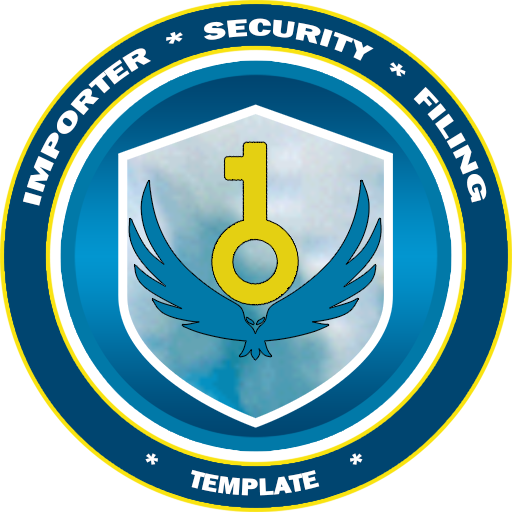How Can I Avoid ISF Penalties For Meat Bowl Cutter
?Are you trying to avoid ISF penalties for importing a Meat Bowl Cutter and want a clear, start-to-finish plan you can follow?

What is ISF and why it matters for your Meat Bowl Cutter
You probably already know ISF stands for Importer Security Filing, sometimes called the 10+2 rule. It’s a U.S. Customs and Border Protection (CBP) requirement that gives authorities advance cargo information for security screening. If you import a Meat Bowl Cutter (a food-processing tool or industrial cutter used in meat preparation), ISF compliance is non-negotiable. Missed or incorrect filings can lead to fines, delays, and even cargo denial.
Who is responsible and what’s your exposure
You, as the importer of record (or your U.S. agent), are accountable for timely and accurate ISF submission. Penalties typically arise from:
- Late filings (must be submitted at least 24 hours before vessel departure from foreign port)
- Inaccurate or incomplete data (wrong HTS, shipper, consignee, or manufacturer)
- Missing ISF for a covered shipment You should treat ISF as a critical compliance step, not an administrative afterthought.
The start-to-finish ISF process for your Meat Bowl Cutter
You want a reproducible workflow. Here’s a practical sequence:
- Gather product data early
- Manufacturer name and address
- Seller/shipper info
- Buyer/consignee in the U.S.
- Country of origin and HTS code for Meat Bowl Cutter
- Container stuffing location and vessel/voyage
- Assign responsibility
- Confirm who will file ISF (you, your customs broker, or an authorized agent)
- Ensure a signed power of attorney if using a broker
- Submit the ISF
- File at least 24 hours prior to vessel departure
- Include all 10 required data elements (manufacturer, seller, buyer, consignee, importer of record number, consignee number (if applicable), country of origin, HTSUS number, container stow plan, and consolidated shipment info)
- Confirm and monitor
- Obtain an ISF number/acknowledgement
- Track shipment and update ISF if changes occur
- Amend when needed
- For changes (e.g., container switch, port of lading changes), file ISF amendment promptly

Practical compliance tips specific to Meat Bowl Cutter shipments
You’ll reduce risk if you:
- Use the correct HTS code: classify the cutter under the right tariff number for food-processing machinery or hand tools depending on its design. Misclassification causes ISF inaccuracies.
- Document the manufacturer precisely: many penalties stem from vague or incorrect manufacturer info.
- Keep U.S. consignee information consistent: mismatches between bills of lading and ISF invite scrutiny.
- Maintain records for five years: CBP can audit historic filings.
- Communicate timelines: confirm vessel departure times with your supplier to meet the 24-hour rule.
Handling common edge cases and tricky scenarios
Situations you might face:
- Consolidated shipments: If your cutter is part of a consolidated container with other exporters, ensure the consolidator files or you coordinate to provide correct manufacturer and shipper details.
- Transshipment or container stuffing changes: If stuffing occurs elsewhere or containers are transferred mid-route, file an amendment immediately to reflect actual stuffing location and carrier data.
- Split consignments/pieces across containers: Each container’s ISF needs accuracy even if all pieces belong to the same purchase order.
- Manufacturer ambiguity: If the supplier is a reseller, require full vendor disclosure of the product’s original manufacturer and country of origin.
How to avoid late or incorrect filings
You can reduce mistakes by:
- Standardizing data collection: use a checklist or form that suppliers fill before shipment.
- Integrating systems: connect your shipping/ERP system to the portal your broker uses to minimize manual entry errors.
- Choosing a reliable filer: evaluate your customs broker’s track record for timely ISF submission.
- Training staff and vendors: teach personnel and suppliers the timeframes and data requirements.
Penalty examples and what they mean for you
CBP tends to impose penalties for violations. You should be aware:
- Late ISF submission fines vary and can accumulate per offense.
- Continuous failures may trigger heightened scrutiny, cargo holds, or targeted examinations.
- Financial penalties are typically enforced against the importer of record; if you use a broker, ensure your contract clarifies responsibility and liability limits.
When to get professional help
If your shipments are frequent, high-value, or you import multiple models of Meat Bowl Cutters, you should consider professional support. That may include full brokerage services, compliance audits, and supply-chain coordination. Some providers also bundle services such as ISF Filing, Bond, Clearance, and Trucking Support for a full import solution.
Quick checklist before shipment
Make sure you:
- Obtain manufacturer and seller details in writing
- Confirm HTS classification and country of origin
- Confirm vessel departure time and container info
- Give the filing party (your broker or agent) all required data at least 48–72 hours before departure, so they can file 24 hours prior with margin
- Keep copies of acknowledgements and maintain records
Final compliance mindset
You want to treat ISF as an essential step of your importing workflow. By standardizing data collection, partnering with reliable agents, and monitoring shipments proactively, you’ll significantly reduce the chance of penalties for your Meat Bowl Cutter imports. If an issue does occur, act quickly—amend the ISF, communicate with your broker, and document your corrective actions to show CBP you’ve taken steps to comply.
